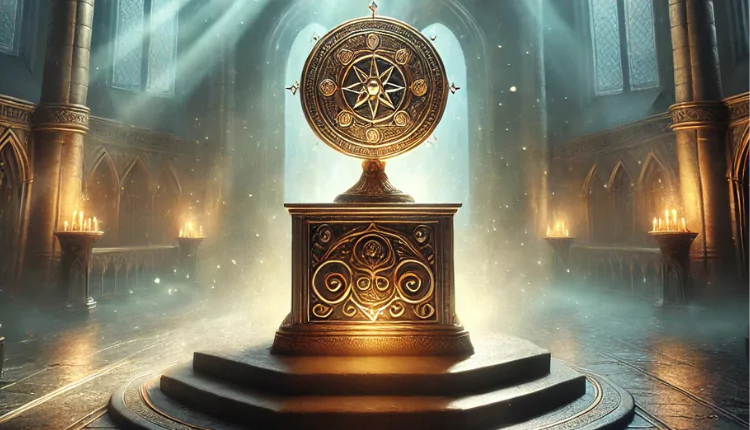When Charlie Bucket first took ownership of Willy Wonka’s chocolate factory, the world seemed to stretch before him like a promising endless horizon. Everything about the factory—the towering barrels of molten chocolate, the complex candy-making machines, the interesting Oompa-Loompas bustling with precision—was a marvel, indeed a dream made tangible.
But owning a dream came with its challenges.
Initially, Charlie felt like a visitor in his own kingdom. Though Mr. Wonka had assured him the Oompa-Loompas would guide him in managing the factory, Charlie, being a kid, found it quite overwhelming. The factory wasn’t just a magical playground; it was an actual business with international demand, schedules, and pressures.
On a brisk autumn morning, Charlie sat in the grand office at the factory’s heart, playing nervously with a carved wooden block. There were piles, and piles of paperwork around him: inventory reports, letters from the transporters and distributors, blueprints for his new machines, and candy ideas. It all felt alien.
“Where would Mr. Wonka even begin?” Charlie muttered.
The Oompa-Loompas, ever efficient, worked tirelessly around him, but they didn’t often stop to explain. They followed his instructions without question, but Charlie felt like a young actor thrust into a leading role without a script.
One particular challenge arose when sales of the factory’s newest product, Fizzingwobble Bars, began to plummet. Despite their fun, wobbly texture and fizzy centre, customers complained that the candy was too messy. Some even reported sticky fingers that wouldn’t wash clean for hours.
Sitting in a meeting room lined with edible wallpaper, Charlie listened as his marketing advisor—a stern man named Mr Gravis—droned on about branding and public perception.
“Mr. Bucket,” he said, adjusting his shining gold-rimmed glasses, “if this continues, we’re bound to lose valuable market share to Earwig Sweets. We need to cut the Fizzingwobble Bars and replace them with something new.”
Charlie frowned at his suggestion, for he remembered how excited the Oompa-Loompas had been when they first created the Fizzingwobble Bars. They had sung a cheerful tune while perfecting the recipe and were absolutely delighted with their achievement.
“No,” Charlie said firmly. “We’re not scrapping the bars. Instead, we’ll find the problem and fix it.”
Gravis blinked, clearly taken aback. “Fix them? But—”
Charlie leaned forward, his young face determined. “Every candy deserves a chance to shine. Let’s rework the formula so it’s less sticky. And while we’re at it, we’ll launch a campaign to show how fun the bars can be.”
Late that evening, after the advisors had left and the factory quieted, Charlie wandered into the Inventing Room. The vast space hummed with potential: machines puffed steam; liquids bubbled in beakers; and conveyor belts clicked rhythmically.
He found the head Oompa-Loompa, Oddy, overseeing a batch of experimental candies.
“Oddy,” Charlie said, “I need your help with the Fizzingwobble Bars. Any ideas how we can make them less sticky but keep the fizz and wobble?”
Oddy considered the request, his small face scrunched in thought: “It will not be easy, Master Bucket, but we Oompa-Loompas love a challenge. Please give us a few days, and I’m sure we will come up with something.”
Charlie smiled. “Take all the time you need. I trust you.”
Meanwhile, Charlie began to grow into his role as the factory’s leader. One of his first decisions was to open the factory gates, offering public tours twice a month.
“It’s too wonderful a place to keep hidden,” he explained to Grandpa Joe, who often visited the factory now that he could walk again. “Kids and adults alike should get to see the magic behind their favourite candies.”
The tours were an instant success. Families flocked from miles around, and some even came from across the world, their laughter echoing through the candy-coated corridors for the first time in ages. Charlie made a point to personally greet every group, sharing stories about Wonka’s eccentric inventions and his own memories of that fateful Golden Ticket.
“It’s not just about making candy. It’s about making people happy,” Charlie would tell them.
One fine morning, while Charlie was busy inspecting a new line of strawberry-filled chocolates, a commotion broke out near the factory gates: there was a group of TV reporters that had gathered there and were shouting questions and waving their cameras. And in their centre stood a familiar face, Arthur Earwig. He was the factory owner whose jealousy of Wonka was as well known globally as Wonka’s candy itself.
Earwig’s smile was as sharp as a razor. “Mr. Bucket,” he called out, “what an impressive little operation you’re running. But do tell me, how does it feel to sit in Wonka’s shadow? Surely, you know you’ll never truly replace him.”
Charlie walked toward him, keeping his calm, “Mr Earwig, you see, the thing is that this factory isn’t about replacing anyone. Rather, it’s about carrying on a legacy and making it my own.”
Earwig chuckled, “We’ll see how long you last. The candy world isn’t kind to ‘dreamers.’”
That night, Charlie sat in the quiet of his office, replaying his competitor’s words. And that was the first time Charlie let doubt creep in and gnaw at his confidence.
“What if he’s right?” Charlie whispered to Grandpa Joe over dinner in the factory’s chocolate-filled dining room. “What if I can’t live up to Mr. Wonka’s name?”
Grandpa Joe shook his head. “Charlie, you were chosen because you’re kind and honest, not because you’re perfect. Wonka saw something in you that goes beyond candy. Don’t let a man like Earwig make you forget that.”
The breakthrough with the Fizzingwobble Bars came a week later. Oddy and the other Oompa-Loompas unveiled their revised formula, which replaced the sticky fizz with a powdered shimmer that melted in your mouth.
“We call it the Shimmer Effect,” Oddy explained. “No more sticky fingers, Master Bucket, and the wobble is still intact!”
Charlie tested one and grinned as it fizzed and wobbled on his tongue. “It’s perfect! Thank you, Oddy. Once again, you guys have outdone yourselves.”
And to celebrate this win, Charlie launched a colorful marketing campaign with interactive booths at the town fair so that kids and adults could try the new Candy Bars. Sales, as expected, soared, and the Candy became a beloved delight again.
With time, Charlie understood how he was to manage and balance the demand and supply of products, running the factory while sticking to his roots. He would often go and visit his family and bring them fresh treats, never forgetting to be humble despite the success that came his way.
On one visit, as he walked through the snowy streets with Grandpa Joe, Charlie stopped outside the small candy shop where he’d first found his Golden Ticket. “That was one day to remember,” Charlie chuckled as he thought about where it all had started.
Grandpa Joe patted his shoulder, “And look just how far you’ve made it, Charlie. But you know what the best part is? You have stayed true to yourself; you’re the exact same boy who bought that ticket home that day. Remember to never lose your kindness, and the factory will thrive.”
The years that followed were filled with challenges, triumphs, and more than a few surprises. Charlie introduced new candies like Glow-in-the-Dark Popsicles and Melody Lollypops that hummed a tune when you sucked on them. He also continued to host tours, delighting in the joy his factory brought to people of all ages.
Though the pressures of leadership never disappeared, Charlie learned to embrace them, relying on his friends, his family, and the ever-loyal Oompa-Loompas to guide him; of course, Mr Wonka was also just a call away, mentoring Charlie through this new phase of his life.
Above all, he remained steadfast in his belief that candy wasn’t just about sweetness; it was about kindness, imagination, and the simple pleasure of making others smile.
Searching for classic tales that teach timeless values?
Explore our collection of Classic Moral Stories on Storyious – thoughtfully curated to inspire, entertain, and educate across generations. These classic tales are more than just stories: they are life lessons wrapped in beautiful narratives, often featuring themes like honesty, perseverance, kindness, love, and wisdom. Each tale, whether a story passed down through generations or a classic children’s story rediscovered anew, offers something deeper beneath the surface. And these are perfect for readers young and old, making values unforgettable through the magic of storytelling. So, dive into Storyious and begin your journey through timeless wisdom now.







Comments